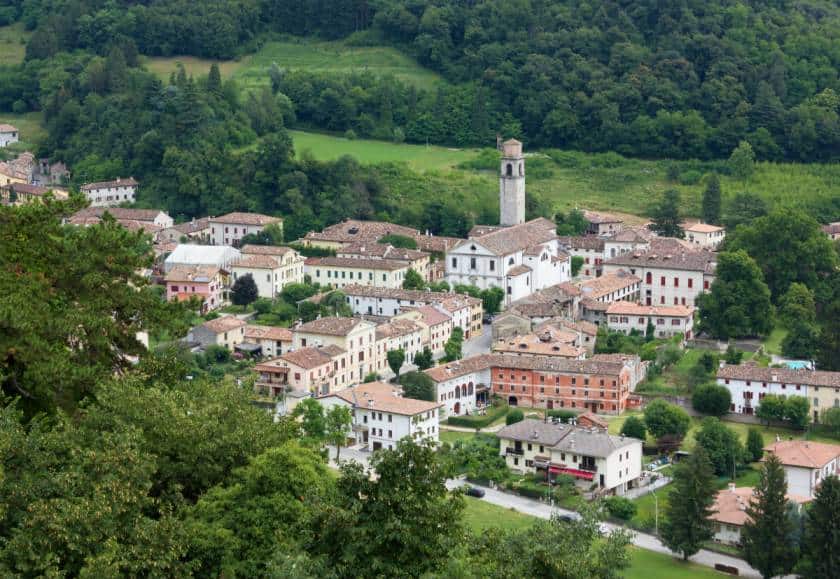


Follina in the province of Treviso, is an active tourist and cultural center, thanks also to its belonging to the club of the most beautiful villages in Italy, and home to industrial and craft activities.
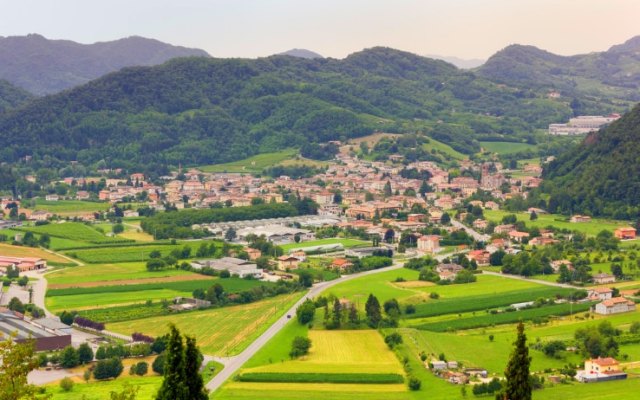
Civilization made its appearance in Follina already in prehistoric times (some finds date back to 120,000 years ago), while from the Roman era they are the remains of a path that someone has identified with the Via Claudia Augusta Altinate.

Towards the middle of the 12th century the Cistercian monks settled in Follina, who are credited with introducing woolen art in the Mareno Valley as well as the construction of the abbey of Santa Maria whose cloister was completed in 1268 by the building monks Arnaldo and Andrea and the master builders Zardino and Armano.
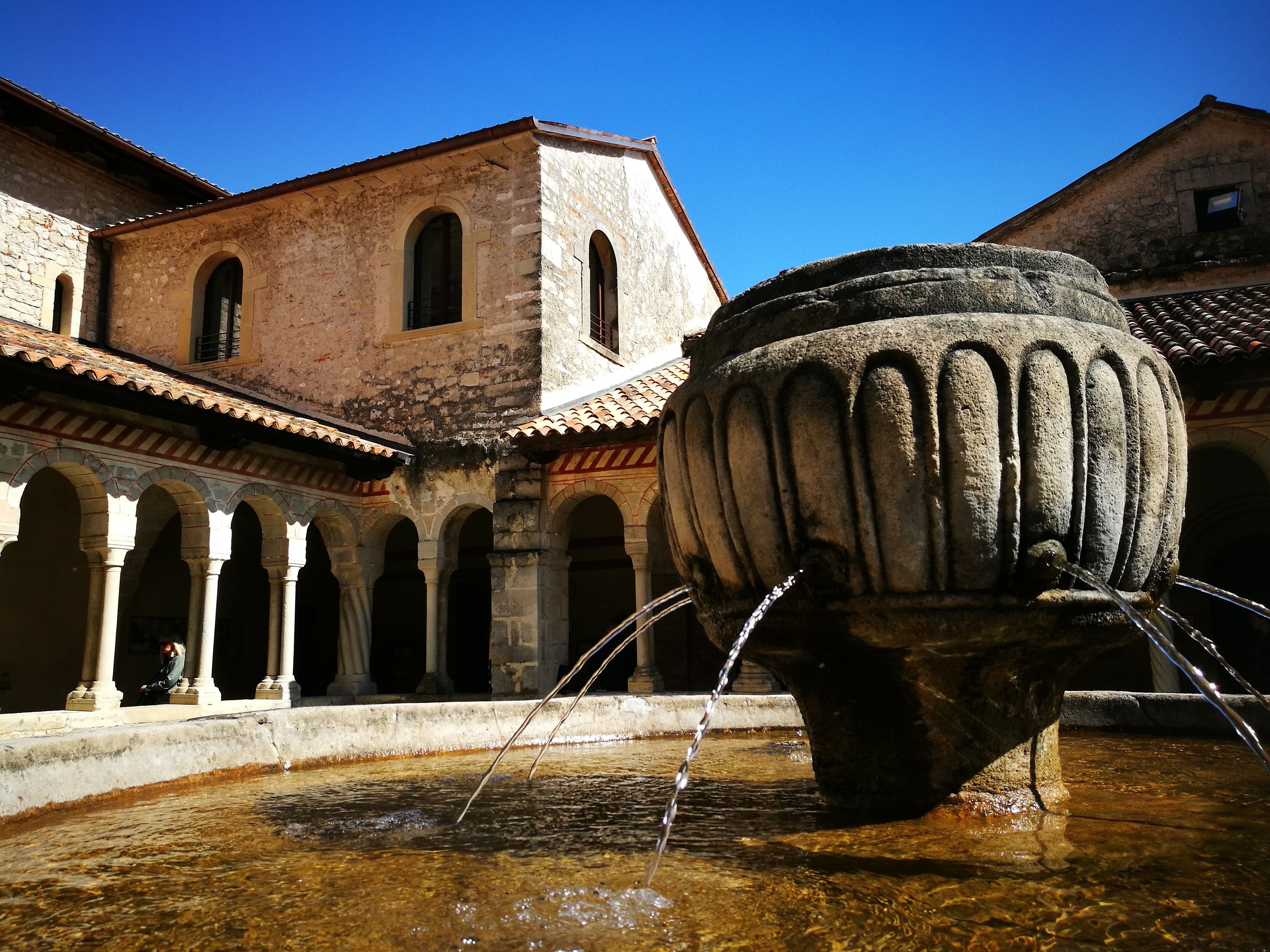
In 1436 the Venetian Republic invests Brandolino III and Gattamelata of the Feud of Valmareno; in 1439 Gattamelata gave his part to Brandolino. The fiefdom will remain with the Brandolini until 1797.

Around 1680 Follina made a qualitative leap from an economic point of view due to the foundation of the manufacture of the Brescia-born Francesco Fadda who was one of the first in Italy to try his hand at imitating the finest and most lightweight English and Dutch fabrics.

Then - around 1740 - the Tron - Stahl wool mills and later that of Col (l) es grafted onto the pilot experience of Fadda. Foreign technicians work in the factories who consolidate Follina's manufacturing vocation.

In 1797 the Republic of Venice fell and Follina followed the fate of the Veneto and passed under the control of the Archduchy of Austria by virtue of the agreements provided for by the Treaty of Campoformio.
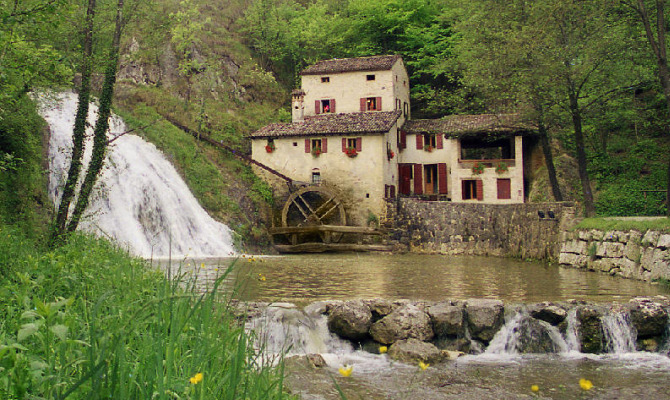
On December 30, 1819 the church of Follina was erected as a parish, with the title of archpriest church, by the bishop of Cenedese Giovanni Benedetto Falier; until then it had been a curacy dependent on Valmareno. The first archpriest is Don Giobatta Boteselle from Col San Martino, already curated since 1818.

In 1865 the first Mutual Aid and Education Society of the province's workers was founded in Follina.

Towards the second half of the 1800s the textile industry of Follina was hit by an irreversible crisis and in 1891 no wool mill would be operating anymore.
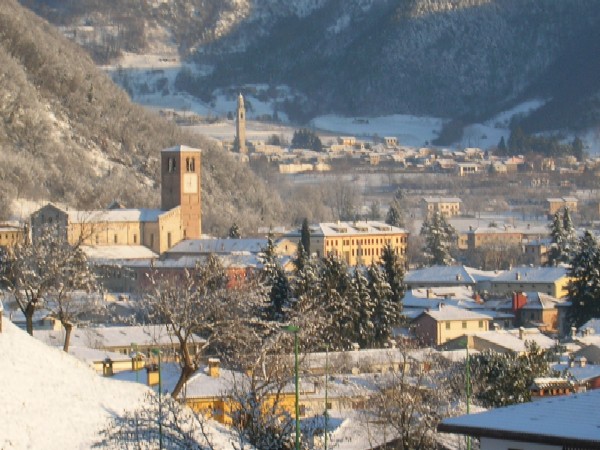
On 9 November 1917 the year of enemy invasion begins during the great war; the country will be liberated only on October 29, 1918.

On 26 August 1944, in the context of the partisan struggle, the trial of Mario Min and Eraclea Zanette takes place, and they are executed. A few days later, in early September, the public square also witnessed the execution of two partisans (Marco Tempesta and Armando Fornasier) by the Germans who, continuing the round-up from Pieve di Soligo towards the Valley, had recently set fire to in Follina about twenty houses and 45 stables.

On 5 May 1968 the new town hall was inaugurated, based on a project by the architect. Conegliano slave. In the eighties, however, the "Antonio Fogazzaro" middle school was completed. The municipality also bought the former "San Giuseppe" college, alienating the cinema and the old town hall building, and built the park and sports facilities there.

Between the 1990s and the 2000s, the retirement home, auditorium and library were built. In addition, an intense urban and infrastructural redevelopment work is started. Productive development is consistent and creates a large number of jobs.
Village of Follina
Address: Via Sanavalle, 14, 31051
Phone: 0438 9733
Site:
https://www.comune.follina.tv.it/home.htmlLocation inserted by
CHO.earth